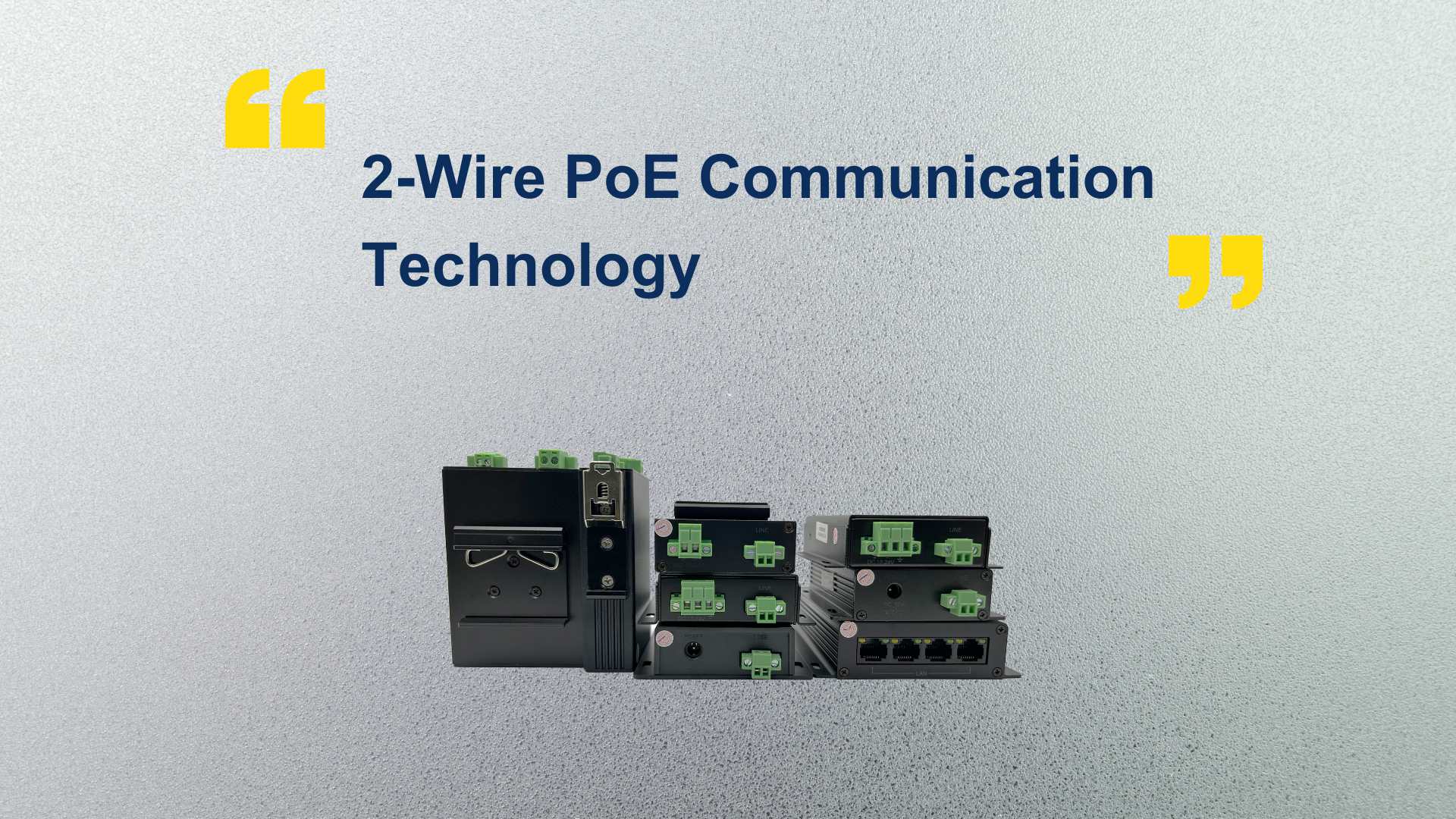
The use of 2-wire PoE transmission technology offers great convenience, achieving long-distance transmission of up to 500 meters while ensuring stable PoE power output.
However, several key points should be considered during practical applications
1. PoE Standards and Power Requirements
IEEE 802.3af (PoE): Provide a maximum power of 15.4W, suitable for low-power devices such as IP phones and cameras.
IEEE 802.3at (PoE+): Provide a maximum power of 25.5W, ideal for devices with higher power requirements, such as more powerful cameras and wireless access points.
IEEE 802.3bt (PoE++ or Ultra PoE): Offer higher power output, up to 60W (Type 3) or 100W (Type 4), suitable for devices requiring greater power, such as advanced wireless access points and digital signage.
Note: Ensure that the selected PoE devices and power sourcing equipment (e.g., PoE switches) comply with these standards and meet the power requirements of the target devices.
2. Cable Selection
Cable Quality and Type: High-quality cables are essential for 2-wire PoE transmission. It is recommended to use cables of at least 2×0.5mm², such as SYV or SYWV 75-5 or higher coaxial cables. Lower-spec cables may lead to reduced power transmission efficiency or fail to maintain the expected voltage.
Using cables of the above specifications with PoE Extender can easily achieve 500 meter transmission. However, it is crucial to use a single, continuous cable without splices or connectors, as these nodes can exacerbate PoE losses.
3. Equipment Compatibility
PSE and PD Compatibility: PoE technology supports adaptive power supply. The power sourcing equipment (PSE, e.g., PoE switches) and powered devices (PD, e.g., PoE cameras) must comply with PoE standards. While most modern devices support PoE, older equipment may not, so it is necessary to verify compatibility.
PoE Allocation: Some PoE switches feature port-specific power-on-demand functionality, intelligently identifying which ports require PoE power to prevent waste. PoE Extender also include PoE management features to keep energy consumption within reasonable limits.
4. Temperature Management
Heat Dissipation: PoE devices may generate heat during power supply, especially PoE+ or PoE++ devices with higher power outputs. It is essential to ensure proper heat dissipation design to prevent overheating, which could damage the device or degrade performance.
Environmental Temperature: Consider the ambient temperature when installing devices. Extremely high or low temperatures can affect PoE power stability and potentially damage the equipment.
5. Overload Protection
Current Protection: PoE devices and switches typically include built-in overload protection. If overcurrent is detected, the system will automatically shut off power to protect the devices from damage. Choosing PoE switches with this feature is recommended for safety.
Reverse Polarity Protection: The 2-wire ports of PoE Extender are equipped with bridge rectifiers to prevent damage caused by reversed signal wires. However, during installation, it is essential to follow the positive and negative markings on the ports for correct wiring.
6. Power Budget and Management
Total Power Budget: In 2-wire PoE transmission, the total power capacity of the PoE switch must be considered. How much power can each line deliver? For example, if a PoE switch has a maximum power of 370W, it must distribute this power among multiple devices. Ensure the switch’s total power budget can support all connected devices.
Line Loss: For long-distance power transmission, account for voltage drops in the cables. The higher the current, the greater the loss. For short-distance PoE, 48V power supplies are typically sufficient. For long distances, 56VDC power supplies are recommended.
Conclusion
2-wire PoE transmission provides significant convenience. However, its application requires careful attention to power demands, cable quality, device compatibility, temperature control, and safety considerations. By addressing these factors, PoE Extender can ensure stable and durable performance in real-world applications.